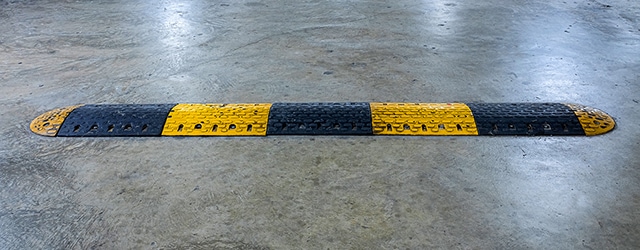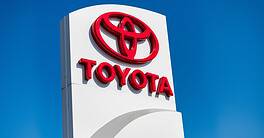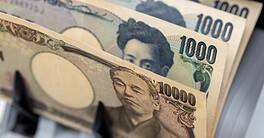Trade wars, tech disruption and structural shifts in investment all bear some of the blame. What will it take to bring capital spending back?

When the Tax Cuts and Jobs Act was introduced in Congress in November 2017, President Trump exulted that the legislation would be “the rocket fuel our economy needs to soar higher than ever before.” Indeed, there was a temporary bump in business investment after the tax cuts became law. But capital expenditures soon headed south.
In fact, US investment in assets like buildings and equipment actually fell by an annualized 0.6% in the second quarter of this year after growing 4.4% in the first—the first decline since the beginning of 2016, according to the Bureau of Economic Analysis.
Lydia Boussour, a senior economist with Oxford Economics in New York, notes that the fiscally stimulated boost in capital expenditures (capex) spending had “fizzled out.” (For more details on capex worldwide, see our story on the Global Cash 25.)
“Companies are facing a very uncertain environment, with elevated trade uncertainty making them more cautious,” Boussour says. “You also have surging share buybacks, and mergers and acquisition activity; and that definitely also happened at the expense of stronger capex expenditure.”
It’s not just the US where capex is hurting, either. “The mini capex boom is fading fast,” writes Gareth Williams, senior director of global research at Standard & Poor’s, reporting on S&P’s Global Corporate Capital Expenditure Survey for 2019. “Global corporate capex grew a mere 2% last year, and we expect a similarly feeble 3% expansion in 2019. This is thin gruel after years of stimulus and means capex will not offer much help in sustaining the current economic cycle.”
Two key takeaways illustrate the downward trend. In Germany, the German central bank said that the country—normally, the industrial powerhouse of Europe—is likely to enter a recession in the third quarter, with economic growth likely to stay “lackluster” going forward after shrinking slightly in the second quarter. It blamed a slowing global economy, especially the US-China trade war and uncertainty over Britain’s exit from the European Union. “Exports fell sharply,” the Bundesbank said in its monthly report on August 19. “Investment by companies in new equipment and facilities probably fell back.”
The other cause for concern came from China, which released a flurry of downbeat data on August 14. Industrial production growth fell to 4.8% in July, the lowest level in 17 years. It had been 6.3% in just the previous month. Fixed asset investments rose only 5.7% in the first seven month of the year, down from 5.9% in 2018, a trend that is pointing sharply downward as the trade war continues to bite.
 Boussour, Oxford: A weak global backdrop, softer economic momentum in the US and elevated trade uncertainty all weighed on business investment and capex plans. |
Although capex is not directly linked with economic growth, decisions by the Federal Reserve and the European Central Bank (ECB) to prime the economic pumps by cutting interest rates and adopting other stimulus measures are yet another indication that recession fears are growing, prompting business spending to take a breather for the next few quarters.
Paradoxically, although markets have recently shown volatility, the decline in capital expenditures started at a time when stock markets were at all-time highs and many companies highly profitable. According to Williams, a broader reason for the capex decline is that companies globally are simply finding it harder than previously to discover areas of growth. “They either have to buy it through such things as mergers and acquisitions or R & D,” he says, “or they return profits to shareholders.”
One result is a long-term structural reduction in money spent on more-traditional forms of business investment like factories and equipment. Because services now play a greater role than manufacturing for many companies, intellectual property such as software is claiming a greater percentage of capex budgets, according S&P Global data. Buried in the US government’s details of business investment, intellectual property, which includes software, drew $1 trillion in the second quarter, compared with only $406 billion in the second quarter of 2002.
The capex picture differs by industry as well. According to S&P Global data, tech and telecommunications companies now account for 17% of all business investment, up from only 12% in 2008. Sectors that have been hit by declines in spending include energy (from $1 trillion in 2011 to $600 billion last year), utilities (off by $100 billion in the last seven years), and materials (down from $400 billion in 2011 to $250 billion in 2018.)
Another reason for the decline in traditional capex is the scramble in some industries as a result of the convergence of legacy companies and disruptors. Take the auto industry, for example: Major players like General Motors, Ford Motor and Daimler now have to pay to build factories that can produce electric vehicles; and they must invest billions in autonomous driving gear and software development. Meanwhile, they are attempting to hold off competition from Uber and Lyft, which aim to change the consumer calculus about car ownership. Since all of these players are competing for market share and technological dominance, capex in the auto industry is not supporting growth in the way it has traditionally.
Pain, By Region And Industry
To date, China had been one of the few brighter spots, with fixed-asset investment growing at 5.8% in the first half of 2019, compared to the previous year. That was due in part to a huge cash injection by the Chinese government, which boosted fiscal spending by 10.7%, as a way to counter the slowing overall economy, which has managed to eke out only 6.2% annual GDP growth.
But even in China, the trade war and slowing global economy have taken their toll on capex spending. In August, China’s National Bureau of Statistics reported that the July producer price index, a measure of what factories charge wholesalers, had declined 0.3%, the first time the index had entered negative territory since 2016. Although the agency gave few details, it said that spending on the “means of production”—which includes capital goods such as machinery—had fallen by 0.7%.
The old saying among economists is that when China catches cold, the rest of Asia sneezes.
Capex spending in other parts of Asia is beginning to come down after decades as the world’s growth engine. What’s still not clear is to what extent President Trump’s trade war with Beijing is the root cause, and how much is attributable to the slowing of the global economy.
“How much we can attribute to the trade war is really impossible to say; but we continue to see fixed-asset investment in automotive and industrials, electricals, machinery and equipment coming down,” says Joseph Devine, CIO for global ex-US equities at Macquarie Investment Management. “That’s gone into negative territory in 2019.”
Good indicators of the change of heart on capex, according to Devine, are the order books for robots—used in manufacture of everything from autos to silicon chips. “For the first time since 2012, we’re seeing a decline in robot orders coming out of Japan,” Devine says. These are Chinese exports of components for motion controls used in factory automation.
Companies like Fanuc and Tokyo Electron in Japan make factory automation equipment; their stocks have declined since the trade war began. Another sector being hit is machine tools, which Japan exports to Chinese factories. July data showed a 30% slump in Japanese machine tool exports compared to the previous year. According to Bloomberg, Japanese machine tool orders fell 7.8% in May from April, the sharpest decline in eight months.
Export growth is also down throughout Asia, Devine says. According to Nikkei, Asia’s five biggest economies—China, Japan, India, Indonesia and South Korea—showed exports falling from a year ago in June. Smaller Asia countries such as Singapore and Thailand were also hit by a slowdown in exports.
“China has become such a global powerhouse that the global slowdown has a lot to do with what’s happening in China,” says Devine. “If China is slowing down, that’s going to hurt Japan, Taiwan and Korea.”
Europe is another region where capex is problematic. While investment showed signs of life early in the year, the mainstays of the continental economy are slowing. Mario Draghi, outgoing president of the ECB, admitted the recovery had been disappointing. “A significant degree of monetary policy stimulus continues to be necessary to ensure that financial conditions remain very favorable and support the euro area expansion, the ongoing buildup of domestic price pressures, and, thus, headline inflation developments over the medium term,” Draghi told a press conference after the bank’s policy meeting in Frankfurt in late July.
A survey by the respected Ifo Institute of the German manufacturing sector, normally the powerhouse of Europe, found the lowest level of capex in more than nine years. Ifo’s President Clemens Fuest says the manufacturing “business climate indicator is in free fall.”
A long-term problem for Europe may be that it has failed to produce the kind of world-beating tech giants that have helped to dramatically power the US economy—and to keep capex from slipping farther. According to S&P Global Ratings’ annual list of the 2,000 largest companies by capital expenditures, Europe accounts for only 17% of the names on the list now, down from 26% in 2008. “Europe has been left behind,” Williams says. “It doesn’t have the tech companies the US has and meanwhile, Asia-Pacific has been roaring ahead.”
The great European unknown is what impact the UK will have. New Prime Minister Boris Johnson has vowed to take the country out of the EU by October 31, even without a withdrawal agreement. This has caused the pound to slump and businesses to largely put investment on hold until a clearer picture emerges.
The U.S.: Direction Unknown
In the US, CFOs are scratching their heads to determine which way the economy is headed. Both the S&P 500 and the Nasdaq composite indexes have touched all-time highs, thanks mainly to earnings at tech companies. And yet, the Federal Reserve felt it had to cut its target interest rate by 25 basis points to protect the current expansion.
Federal Reserve Chairman Jerome Powell said on July 31, in announcing the rate cut, that the slowdown in business investment has been greater than the Fed anticipated.
“You see manufacturing being weak all over the world. Business investment is weak,” Powell told reporters. “And I wouldn’t lay all of that at the door of trade talks. I think there’s a global business cycle happening with manufacturing and investment; and that’s been a bigger factor, certainly, then we expected.”
Although corporate profits are higher in the US than elsewhere, the International Monetary Fund’s April Global Financial Stability Report noted that “strong profits in the United States were used for payouts and other financial risk-taking.” This year, according to analysts at Goldman Sachs, firms in the S&P 500 paid out more for stock buybacks and dividends than they earned—103.8% of free cash flow.
What’s driving the buyback trend, says JJ Kinahan, chief market strategist at TD Ameritrade, is that Trump’s tariff dispute with China is creating massive uncertainty among boards and C-suite executives.
“When you have this great unknown, as a CEO you’re not going to get into trouble for buying back stock,” Kinahan says. “But you are going to get into trouble if you invest a bunch of money in new equipment or new technology for sales that may not happen.”
Although trade is a relatively small percentage of US GDP compared with China or Europe, a consensus among economists holds that uncertainty about trade and tariffs is holding back US businesses from investing more in fixed assets like factories and equipment.
In a July note to clients, Morgan Stanley chief US economist Ellen Zentner says the firm’s Capex Plans Index fell in June thanks to “continuing uncertainty around trade,” which points to a “softer picture for business investment ahead.”
“We have been below consensus on expectation for capex growth this year; but incoming data continue to point to a downside ahead, even relative to our muted expectations,” Zentner says.
It all comes down to business confidence, Oxford Economics’ Boussour says, noting that the National Federation of Independent Business’s (NFIB) monthly Small Business Optimism Index showed a decline. “Both capital spending plans and reports of actual spending fell in June,” the NFIB reports.
“What that tells you is that against a weak global backdrop, softer economic momentum in the US and elevated trade uncertainty all weighed on business investment and capex plans,” Boussour says.
Looking ahead, much hinges on the outcome of the next rounds of talks between Beijing and Washington to resolve their trade conflict. The latest signs are not good: On August 1, Trump said he would impose an additional 10% tariff starting September 1 on $300 billion worth of Chinese imports. Research into the history of trade wars shows that tariffs tend to stick around for a long time, even years after a trade dispute is resolved, Boussour says.
If that proves out in the case of the Trump-China dispute, capex could continue to suffer for many quarters to come. Considering that many economists are predicting a global recession after a very long period of economic growth, that could damage business confidence—and dampen capex—well into the future.



